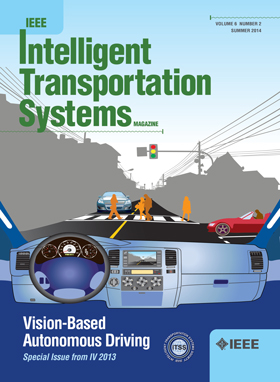Exploring the Influence of Driving Context on Lateral Driving Style Preferences: A Simulator-Based Study
IF 7.9
1区 工程技术
Q1 ENGINEERING, CIVIL
IEEE Transactions on Intelligent Transportation Systems
Pub Date : 2025-02-04
DOI:10.1109/TITS.2025.3534879
引用次数: 0
Abstract
Technological advancements focus on developing comfortable and acceptable driving characteristics in autonomous vehicles. Present driving functions predominantly possess predefined parameters, and there is no universally accepted driving style for autonomous vehicles. While driving may be technically safe and the likelihood of road accidents is reduced, passengers may still feel insecure due to a mismatch in driving styles between the human and the autonomous system. Incorporating driving style preferences into automated vehicles enhances acceptance, reduces uncertainty, and poses the opportunity to expedite their adoption. Despite the increased research focus on driving styles, there remains a need for comprehensive studies investigating how variations in the driving context impact the assessment of automated driving functions. Therefore, this work evaluates lateral driving style preferences for autonomous vehicles on rural roads, considering different weather and traffic situations. A controlled study was conducted with a variety of German participants utilizing a high-fidelity driving simulator. The participants experienced four different driving styles, including mimicking of their own driving behavior under two weather conditions. A notable preference for a more passive driving style became evident based on statistical analyses of participants’ responses during and after the drives. This study could not confirm the hypothesis that people prefer to be driven by mimicking their own driving behavior. Furthermore, the study illustrated that weather conditions and oncoming traffic substantially influence the perceived comfort during autonomous rides. The gathered dataset is openly accessible at求助全文
约1分钟内获得全文
求助全文
来源期刊

IEEE Transactions on Intelligent Transportation Systems
工程技术-工程:电子与电气
CiteScore
14.80
自引率
12.90%
发文量
1872
审稿时长
7.5 months
期刊介绍:
The theoretical, experimental and operational aspects of electrical and electronics engineering and information technologies as applied to Intelligent Transportation Systems (ITS). Intelligent Transportation Systems are defined as those systems utilizing synergistic technologies and systems engineering concepts to develop and improve transportation systems of all kinds. The scope of this interdisciplinary activity includes the promotion, consolidation and coordination of ITS technical activities among IEEE entities, and providing a focus for cooperative activities, both internally and externally.
 求助内容:
求助内容: 应助结果提醒方式:
应助结果提醒方式:


